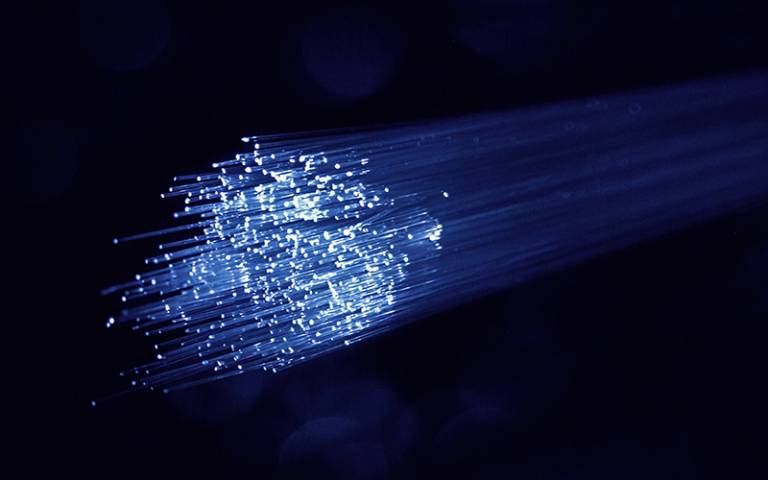Forget WiFi, the future is LiFi
Developing the world’s first complete visible light communications system

14 February 2020
High speed internet could be delivered through the lights in homes and offices, revolutionising the way we download and upload information in the future, finds UCL researchers.
Academics from UCL, Northumbria University and Newcastle University are developing a new type of organic LED (light-emitting diode) which will communicate with smart devices such as tablets and phones to download and upload huge amounts of data.
Known as ‘LiFi’, the new technology uses visible light communication to transmit information. LEDs in ceilings can be turned on and off at a very high frequency that isn’t visible to the human eye to communicate with LEDs in phone or tablet screens and hence,
they do not need any tracking mechanisms to operate. Dr Paul Haigh (UCL Electronic & Electrical Engineering) said: “The LEDs we are developing are plastic, flexible devices which are cheap to make and which are already appearing in high-end mobile phones, tablets and televisions.
“We are incorporating these into a thin film, just 500 nanometers (0.0005 millimetres) thick that could be used as a smart phone or tablet screen, allowing it to act as a LiFi transmitter.
“In addition, as well as looking at how we transmit information from a light in the ceiling to an electronic device, we are the first researchers to also consider how we can transfer information the other way too, allowing devices to essentially talk to each other.”
With its ability to allow electronic devices to communicate with each other, LiFi could also successfully be used for car-to-car communication; underwater communications systems between various manned and unmanned platforms; for communication between handheld devices and as an enabler for local positioning systems.
It is envisioned that smartphones will play a major role in the delivery of LiFi networks, with the technology expected to be in everyday use in the next five to 10 years.
- Search 'UCL EEE research' to find out more.
Image credit: Denny Muller on Unsplash.
 Close
Close

